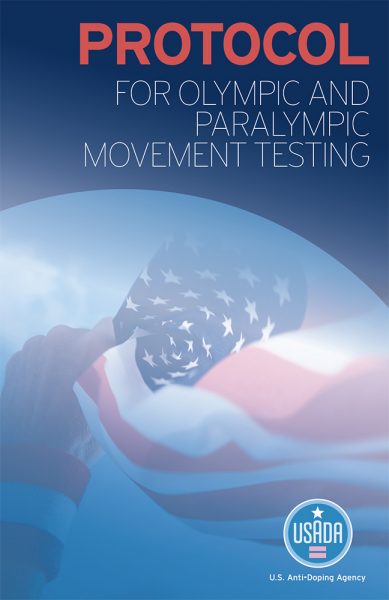What Happens Next?
Athletes who retire will be immediately removed from the USADA testing pool and will no longer have to comply with certain athlete requirements, such as providing Whereabouts information. To confirm retirement, an athlete will receive a retirement letter from USADA, via email, stating the date of retirement, withdrawal from retirement information, and return from retirement options, should an athlete wish to return to competition at a later date.
Until an athlete has finalized all of the necessary retirement steps, they are still subject to the requirements of an athlete in a USADA testing pool.
If an athlete does not provide advance written notice of retirement and is notified for testing, but refuses to provide a sample for an out-of-competition test, this is a refusal to test. If the athlete refuses to provide a sample, they may be subject to an anti-doping rule violation and a four-year period of ineligibility.
USADA’s Protocol for Olympic and Paralympic Movement Testing
Who is this for?
Athlete and Support Personnel
What’s inside?
Read the “Retirement” section of the U.S. Anti-Doping Agency Protocol for Olympic and Paralympic Movement Testing for the full rules.
Frequently Asked Questions
Got Retirement Questions?
Click on the question to drop down the answer.
What should athletes do when they retire from their sport?
Any athlete who retires must promptly inform USADA, their NGB, and their IF in writing via mail or email that they are retiring. They should also check with their IF to determine if there are additional steps they need to follow to complete the retirement process. Until an athlete has finalized all the necessary retirement steps, they are still subject to the requirements of an athlete in a USADA testing pool.
If an athlete does not provide advance written notice of retirement and is notified for testing, but refuses to provide a sample for an out-of-competition test, this is a refusal to submit to sample collection. If the athlete refuses to cooperate or fails to report to testing within the given time frame, the athlete will be subject to the consequences set forth in the World Anti-Doping Code for their anti-doping rule violation.
What if an athlete wants to come out of retirement and return to sport?
Athletes formerly in the RTP and CAP are required to notify USADA and their IF, in writing, of their return from retirement and be in the RTP or CAP for at least six months before participating in any national or international events. At the start of the six months, athletes must make themselves available to be tested. If they wish to seek an exemption from the six-month written notice rule, they may apply to WADA. While athletes in USADA’s EP must provide written notice, they will not be required to serve a six month period in the pool prior to competing.
Additionally, athletes should confirm whether their particular NGB or IF has additional requirements in order for them to regain eligibility after retirement. For instance, USA Swimming and USA Track & Field athletes wishing to return from retirement must first contact their NGB as those sports require specific forms to return from retirement.
What happens if an athlete retires while serving a sanction?
If an athlete retires while serving a sanction, their period of ineligibility will be tolled and resumed upon their return from retirement if applicable.
Still have Questions?
Get answers on the retirement process

Contact Athlete Connect for questions on retiring or returning from retirement via email at AthleteConnect@USADA.org, call (719) 785-2000, or use our contact form.
NOTE: This form does not update Whereabouts information.




